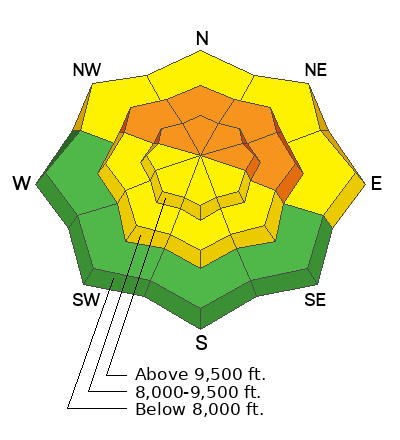Forecast for the Salt Lake Area Mountains

Issued by Trent Meisenheimer on
Saturday morning, December 10, 2022
Saturday morning, December 10, 2022
The avalanche danger is CONSIDERABLE on mid and upper elevation aspects facing northwest through north and east, where human-triggered avalanches may break down 1-4' deep and over 200' wide, failing on a persistent weak layer of faceted snow.
These avalanches can be triggered from a distance, so make sure there are no steep slopes above you.
Continue to avoid being on slopes steeper than 30˚ degrees.

Low
Moderate
Considerable
High
Extreme
Learn how to read the forecast here









